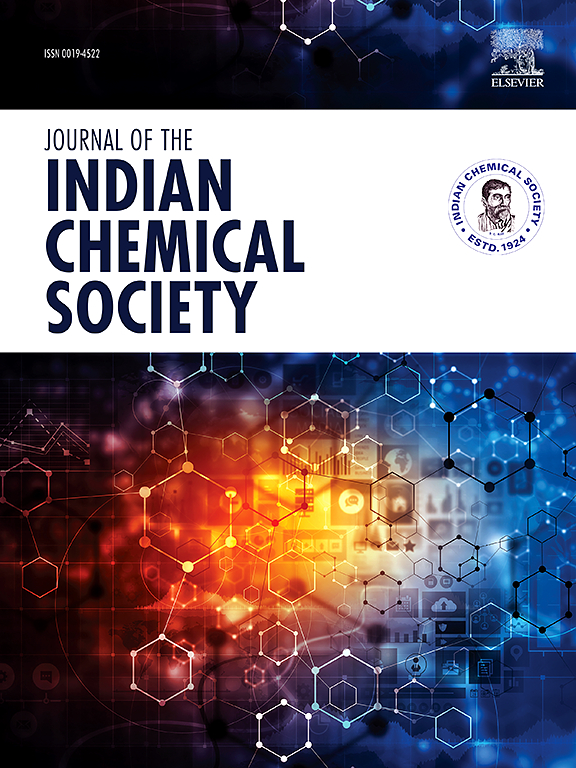超声波和MgMn2O4尖晶石纳米颗粒对罗丹明B的脱色研究
IF 3.2
4区 化学
Q2 CHEMISTRY, MULTIDISCIPLINARY
引用次数: 0
摘要
目前的工作证明了超声波(US)和MgMn2O4尖晶石纳米颗粒同时激活过碳酸钠(SPC)对罗丹明B (Rh B)染料的有效脱色。在超声存在下,采用共沉淀法合成了MgMn2O4尖晶石纳米催化剂,随后用XRD、SEM和FTIR分析对其进行了表征。研究了SPC浓度、pH、催化剂用量、US比功率等因素对Rh B脱色的影响。实验结果表明,US/MgMn2O4/SPC体系对Rh B(初始水溶液浓度- 0.209 mM)的脱色效果良好,60 min脱色率达98%。最佳条件为pH = 3, SPC初始浓度为5 mM,催化剂负载1.0 g/L, US比功率为51 W/L。清除实验表明,在US/MgMn2O4/SPC工艺中,HO•和1O2对Rh B的脱色起主导作用。所合成的MgMn2O4尖晶石纳米催化剂具有良好的可重复利用性,经过4次循环后,Rh B去除率达到92.3%。本文章由计算机程序翻译,如有差异,请以英文原文为准。

Decolorization of Rhodamine B using activated sodium percarbonate by ultrasound and MgMn2O4 spinel nanoparticles
The current work demonstrates the effectiveness of the simultaneous activation of sodium percarbonate (SPC) by ultrasound (US) and MgMn2O4 spinel nanoparticles for the efficient decolorization of the Rhodamine B (Rh B) dye. MgMn2O4 spinel nanocatalyst was synthesized using the co-precipitation approach in the presence of ultrasound, followed by subsequent characterization using XRD, SEM, and FTIR analysis. The effect of several factors, such as SPC concentration, pH, catalyst dosage, and specific power of US, on the decolorization of Rh B has been studied. Experimental results demonstrated that Rh B (initial concentration in aqueous solution – 0.209 mM) could be efficiently decolorized (98 % in 60 min) by the US/MgMn2O4/SPC system. The best conditions for the Rh B decolorization were obtained as pH of 3, the initial SPC concentration of 5 mM, catalyst loading of 1.0 g/L, and the specific power of US of 51 W/L. Scavenging experiments elucidated that HO• and 1O2 played a dominant role in the decolorization of Rh B using the US/MgMn2O4/SPC process. The synthesized MgMn2O4 spinel nanocatalyst showed excellent reusability for recycle (92.3 % removal of Rh B after four cycles).
求助全文
通过发布文献求助,成功后即可免费获取论文全文。
去求助
来源期刊
CiteScore
3.50
自引率
7.70%
发文量
492
审稿时长
3-8 weeks
期刊介绍:
The Journal of the Indian Chemical Society publishes original, fundamental, theorical, experimental research work of highest quality in all areas of chemistry, biochemistry, medicinal chemistry, electrochemistry, agrochemistry, chemical engineering and technology, food chemistry, environmental chemistry, etc.

 求助内容:
求助内容: 应助结果提醒方式:
应助结果提醒方式:


